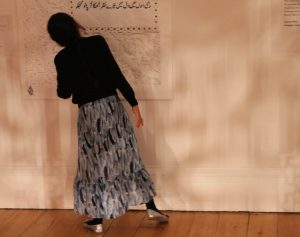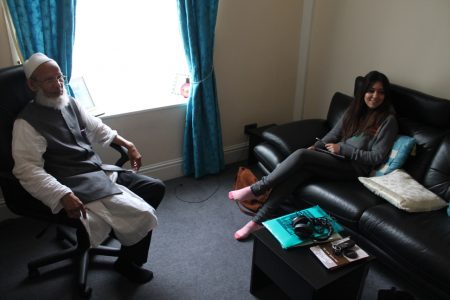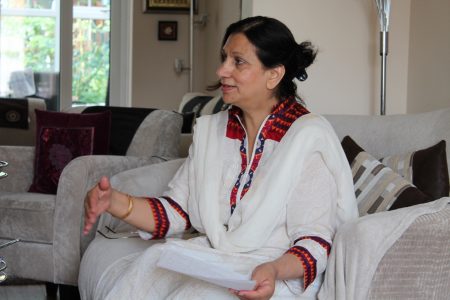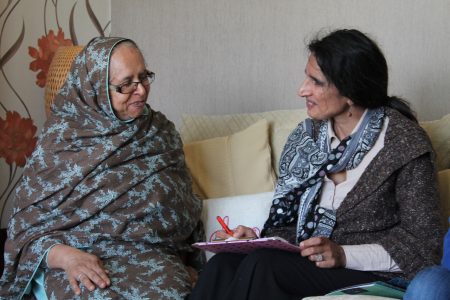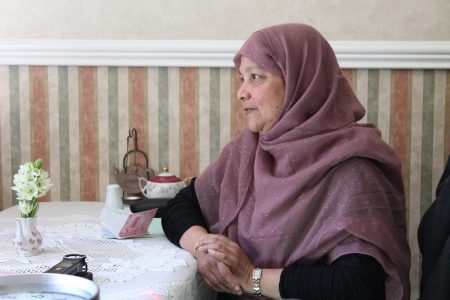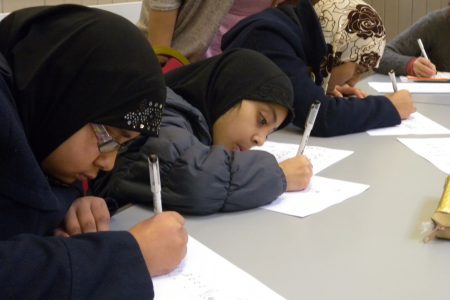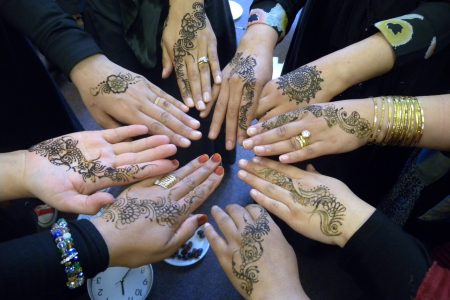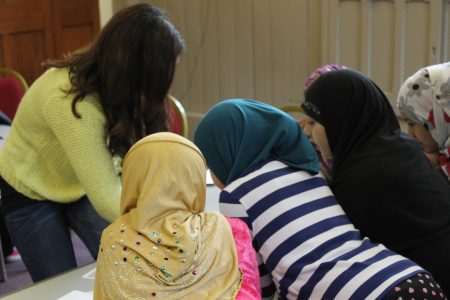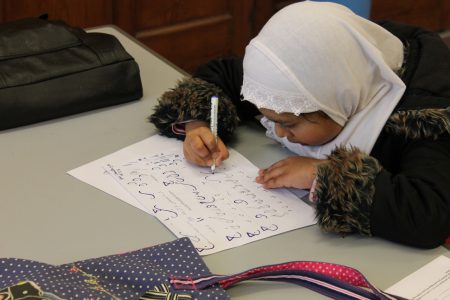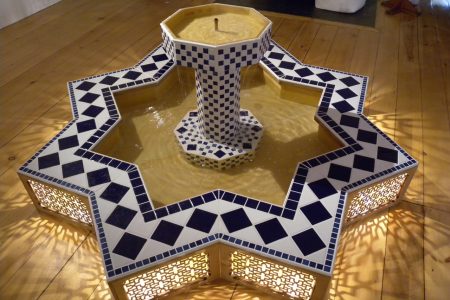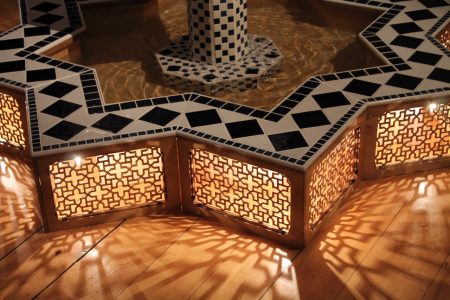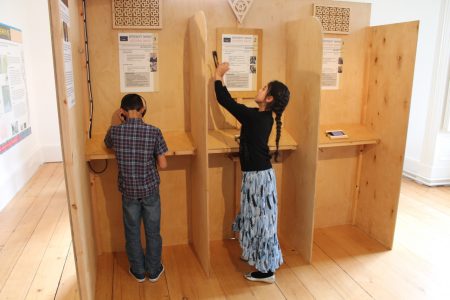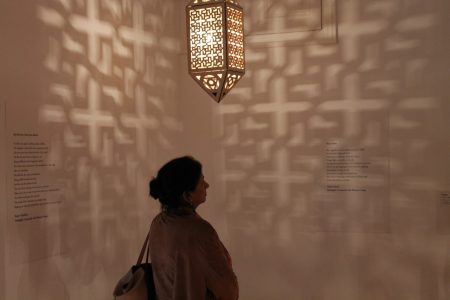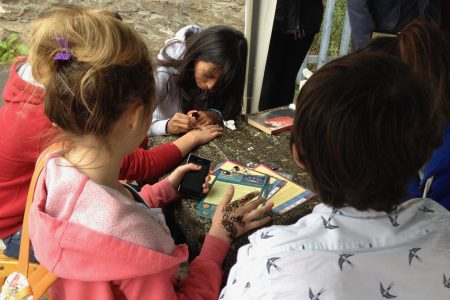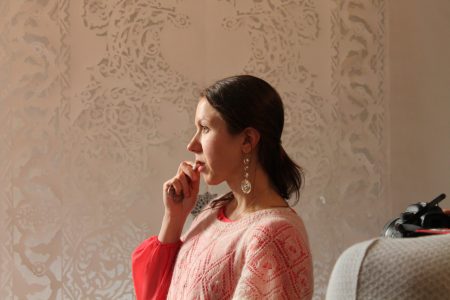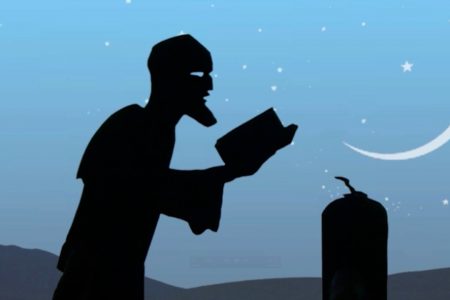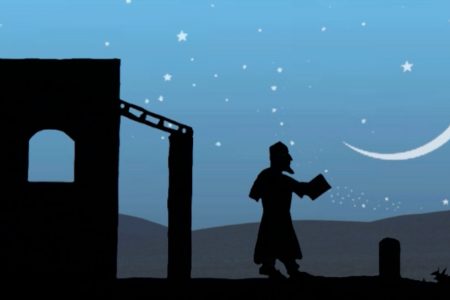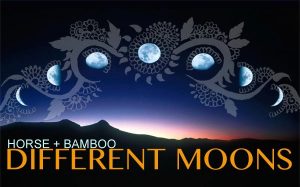
Background
Around 2012/3 the main focus of the company changed from writing, creating and touring shows (Horse + Bamboo) to that of a venue with a community programme (The Boo). It seemed like a good time for me to leave. However, there was one thing that I felt I could still usefully achieve. This was to develop creative links with the relatively separate local communities with South Asian heritage. This became ‘Different Moons’.
My friend, the artist Dave Pearson, had died in 2008 and I took over his studio in Haslingden as a place to store and catalogue his work. Our next door neighbours are Pashtun. Many families in that part of town are either from a Bengali, Pakistani or Pashtun background. It means there are also different language groupings – Bengali, Urdu and Pashtun. Our neighbours came from the western borders of Pakistan, the area spilling into Afghanistan. Past arts projects had worked with the Asian communities, notably Mid-Pennine Arts creative writing courses and our own Rossendale Festival in the late 1980s. But no sustained attempt had been made to break through the undeniable cultural barriers that existed. Working on Veil had raised my awareness of some of the issues affecting Muslim communities and I was anxious to do something. Further, working with the Gaelic speaking community on Angus – Weaver of Grass had made me see that we could make a difference.

Large mehndi panel by Habiba Shenza. Different Moons.
My initial research showed that there was no information on the history of the South Asian communities in the local libraries. Nothing even regarding basic facts such as how and why they had come to settle in the area. This despite the fact that people from an Asian heritage are now very visible in a town like Haslingden. They are our neighbours and often our friends, but there was no information available about their background. The central history library in Accrington contained one, out of date, pamphlet. It was a thoughtful booklet produced by a local authority officer to help others understand some of the problems they might face when dealing with local South Asian communities.
I decided that it needed a new approach, which should begin by interviewing some of the first immigrants, and to record their stories. I wanted to do this with care and publish the results in book form so that the libraries would finally have some proper background documentation. After all, people of South Asian heritage now make up an important part of the Rossendale community. From the beginning I wanted this to be the starting point for an extended project. It needed to avoid the fate of previous schemes which had achieved their immediate ends, but then had disappeared.
The team
I felt that we first needed to run a trial programme, starting with local schools, before making further plans. I also recognised that I wouldn’t get very far without having partners from within the South Asian communities. In this I was fortunate from the start. I asked my neighbour, Nusrat Rahmen, if she knew of any artists within the local Asian community. At first she shook her head…then she hesitated and said that she had a niece, Habiba, who was ‘artistic’. I asked if I could meet Habiba and Nusrat gave me her phone number. Shortly after I met up with Habiba in the library; she was only 19 and had just left school. Naturally I wasn’t confident that she would have enough experience for this work. But in fact she was perfect; bright and confident. Habiba was also fortunate to have well connected and supportive parents, who encouraged and helped her, and in turn her confidence infected me. She was a talented henna artist in her own right, and her mehndi designs became a feature of the visual style that emerged from Different Moons.
Suhail Khan of Apna Creatives in Manchester introduced me to Shamshad Khan. Shamshad is an experienced Manchester based poet and trainer, and I asked her to work as Lead Artist on Different Moons. Shamshad agreed and with Habiba’s help she ran a pilot project at St. James School in Haslingden. St. James has an intake of close to 90% South Asian heritage and Muslim children, yet is a Church of England School. Running these classes went a long towards helping us clarify both our process and our objectives. We submitted a report on the pilot project to the Heritage Lottery fund with a plan for an ambitious 30 month programme. In this we were helped by having made contact with the Islamic Supplementary School, based at Haslingden Community Link. They were enthusiastic about our ideas and keen to participate in the project.
At first I thought we would be working with a community – the ‘South Asian (heritage) community’, but from the beginning Shamshad insisted that I thought of communities, plural. The good sense of this soon became obvious. There were three main language groups and other groupings too, largely based on religious differences, though much of this was almost invisible to an outsider like myself. There was also the fact that men and women from this cultural background often lived relatively separate lives, in part due to the fact that the local mosques were for the men only.
Habiba was from a Pashtun background; Shamshad from a Pakistani. The third member of the team, Arry Nessa, came along later as a volunteer, and she was from a local Bangladeshi family and a Bengali speaker. So, quite by chance, each of the main language groups within the communities was represented at the heart of the Different Moons team.
The first year
The first year of Different Moons culminated in a big exhibition at the Whitaker, our local museum and art gallery in Rawtenstall. The exhibition was partly telling the story of the South Asian communities in Rossendale. We installed listening posts so visitors could hear extracts from the interviews we had recorded. There were also examples of some of the powerful poems written in Shamshad’s workshops. I also commissioned animators to make short films inspired by some of the stories we recorded. The second part was my poetic response to the religious lives of the Muslim community. It was centred around a working fountain built by Phil Milston, using traditional Islamic forms. This was accompanied by a soundtrack which created a meditative space that proved very popular. The exhibition was extended and was open for 8 weeks in total, during which time it had 5000 visitors.
The second and third years
The second year saw the publication of a book of poems from the various classes that had been led by Shamshad, and readings at Haslingden Library. This was a powerful testament both to Shamshad’s mentoring and her vision. Both years saw successful mela’s and bazaars’s, along with film shows, theatre pieces and music events at the Boo. The final year saw the publication of all of the interview texts, bound in leather, which were donated to each of the local libraries. There was now no longer a complete deficit of material relating to Rossendale’s South Asian community.
Apna
The outcome from Different Moons that continues to have an impact is the one that was least planned. We soon realised that it was local South Asian women who most participated in, and benefitted from, the programme. This may have been because they had fewer opportunities and, as noted, were excluded from the life of the mosques. Arry Nessa, whose commitment and contribution to the project had grown and grown, and I had the idea of opening a pop-up centre in Haslingden for a few months. The initial idea was to show some of the work that had been in the Whitaker, and see if there was any enthusiasm from the community for further workshops and classes. The project budget had a small contingency fund that we used for this, and we rented a small shop premises in the centre of town and organised an exhibition plus a few trial classes and events.
Arry and I were delighted by the success of this venture, which we called Apna (meaning ‘yours’ or ‘ours’ in both Urdu and Bengali). When the project was due to close there were complaints from many of the women for whom we had provided a safe place of their own. Community Link, through Hameeda Mahmoud, already offered classes for South Asia women but these had an entrance charge and, in any case, they were in constant danger of closure through budget cuts.
When Different Moons came to its end Arry and I decided to try to keep Apna open. We were successful in applying for a small Arts Council grant and to a local trust fund, and able to keep it afloat for another year. At first most of the activities were arts or crafts based, but soon language, health, well-being, current affairs and history workshops were offered, along with occasional larger scale events. In 2017, when the second grant came to an end, we decided to move Apna to the Dave Pearson Studio in order to cut costs further.
Apna was then funded by a three-year grant from the Tudor Trust. Most weekdays it offered some activities for South Asian women, but by the end of 2019 the Tudor Trust grant finished; Covid-19 arrived, and Arry Nessa then moved to Swindon to start a new life. Apna Rossendale now stands at a crossroads – there’s still a core of women who want to continue the work, even if funding remains uncertain. Apna has clearly been big help in creating new and creative opportunities for women of South Asian heritage…it will be interesting, too say the least, as to where its impetus takes them next.
